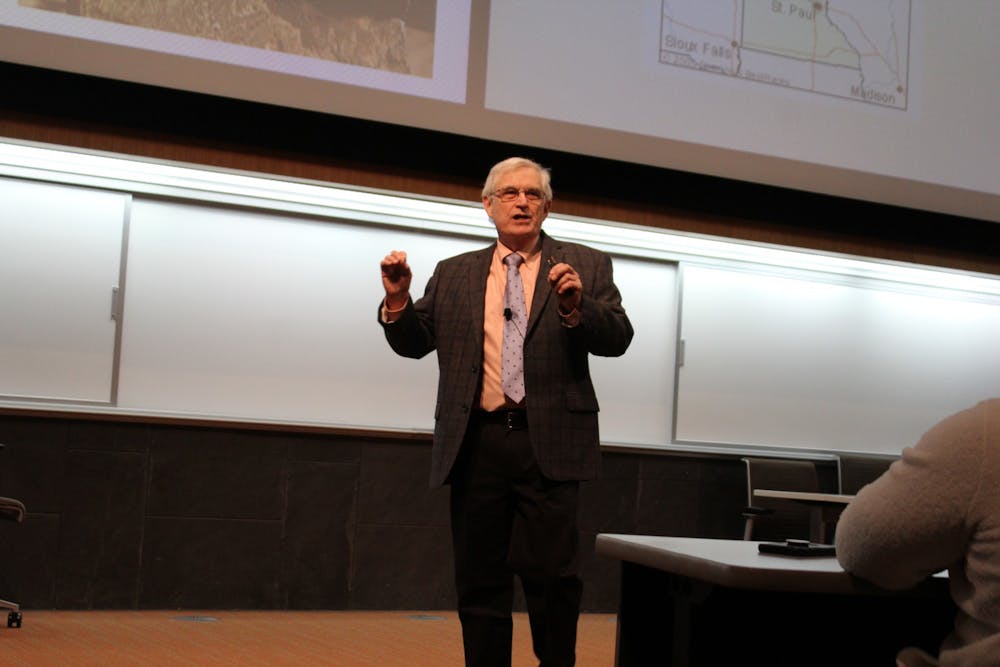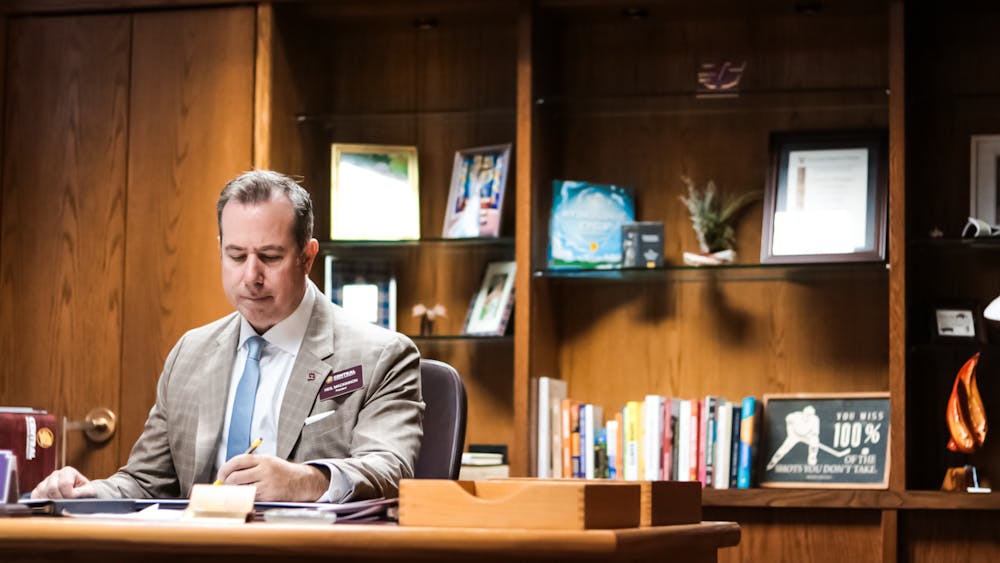Joel Best highlights how to identify facts, fake news

University of Delaware sociology and criminal justice professor Joel Best gives presentation for the event, "Facts, Fake and Other F-Words: Critical Thinking in Contentious Times," on Feb. 26.
French Auditorium was filled Feb. 26 with individuals who wanted to learn about the social processes used to determine whether a piece of information is factual or fake.
The event, “Facts, Fake, and Other F-Words: Critical Thinking in Contentious Times,” was led by University of Delaware sociology and criminal justice professor Joel Best. The event was sponsored by the College of Liberal Arts and Social Sciences as part of their Critical Engagements series, "Fake News: What Do We Knew and How Do We Know It?"
Best used real-life examples for his key points and highlighted considerations that need to be taken when addressing whether information is factual.
The spread of misinformation may be a result of multiple elements, and may be deliberately spread at times. However, sometimes the spread of “fake” information can be unintentional.
Best highlighted the idea “everything we know is socially constructed.” The idea stems from meanings and languages established by different cultures.
Further consideration should be taken when determining facts since they are “socially constructed,” Best said. With differences in culture, one person’s truth may be much different than someone else’s which can lead to the spread of misinformation.
Also, fake information may instead be due to a lack of knowledge. Best displayed this with the example of Earth’s rotation, and how at one point individuals believed a different fact than what is known today.
“For much of human history, it was considered to be an absolute fact that the Sun went around the Earth, and there was a lot of evidence for it because you saw the Sun go around (the sky every day),” Best said. “Now we tend to think the Earth is going around the Sun. What this tells us is that not only do facts change, but people can argue about facts. A fact is not something that is incontrovertible.”
For Okemos freshman Taryn McCarthy, this example allowed her to put herself in the position of those who had their facts altered.
“You kind of step in those shoes because people probably did think that was crazy because for so long that’s what they thought,” McCarthy said. “(Thinking about) how science and the process of things could change an entire century’s (worth) of thinking can be kind of crazy.”
For Best, to truly understand if a subject is factual, there must be evidence. Without an explanation for the data collected, individuals can not be sure if something is factual or not.
“Fact is not something that is concrete (and) is just true," Best said. "It’s something that is built by people, and they have to be able to explain the reasoning that produces those facts.”
The accuracy of data can be evaluated by two key components: the sampling and how this is sampling is being measured.
By asking additional questions and learning the processes of research, individuals can have a better idea of what is accurate and what is inaccurate.
Trenton senior Ashleigh Steelman chose to come to the event not only for a class, but to also gain more insight on fake news when considering upcoming elections.
“I thought it would be good (to attend) because I am a sociology major, so I feel like (the information discussed) is good to know, especially with the elections and stuff,” Steelman said. “Fake news is really relevant right now.”
Even with the relation to fake news today, Best emphasized that spreading fake information was evident in times before.
Best wanted the audience to grasp that these issues may be a problem now, but have been prevalent even before recent years.
“Pretty much everybody has been blamed at one time or another for what’s wrong with this country," he said. "Every time some new form of communication… (or) new form of entertainment has appeared, people have argued that this is a particularly threatening, troubling, disturbing development. We want to get past the idea... that (spreading misinformation) used to be completely different and now it’s terrible -- it was always terrible.”






